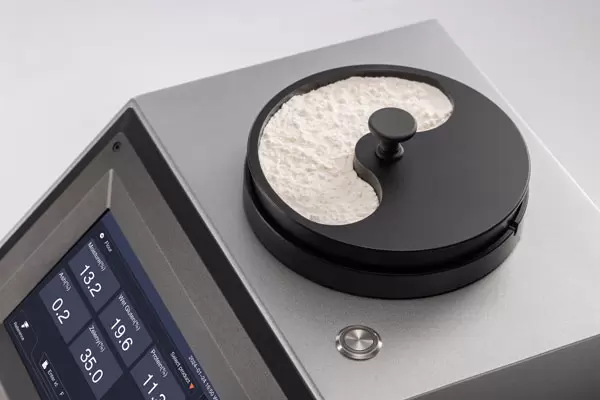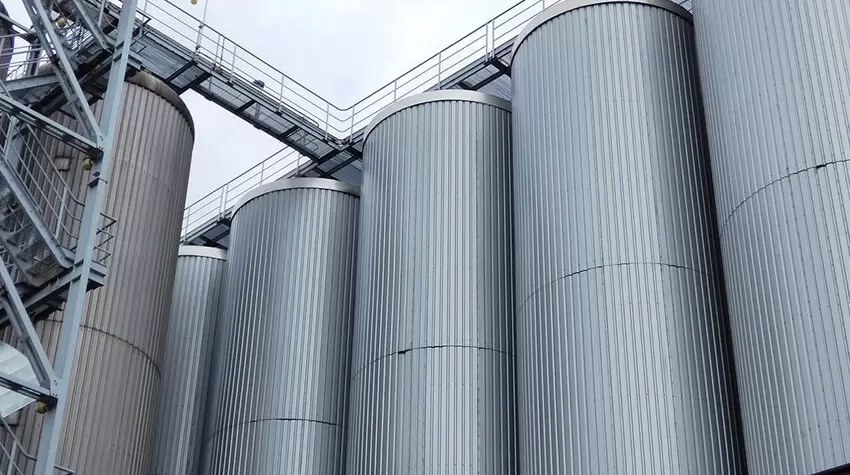From Laboratory to Field: The Practicality of Multiple Grain Composition Analysis Instruments
In the ever-evolving landscape of agricultural technology, the demand for precision and efficiency has never been greater. As farmers and agronomists work to optimize crop yields and ensure quality, advanced analytical tools have become essential. Among these, IAT NIR analyzers, developed by IAT (Singapore) Technology, stand out as a revolutionary solution for multiple grain composition analysis.

IAT NIR analyzers utilize Near-Infrared (NIR) spectroscopy, a non-destructive analytical technique that measures the absorbance of near-infrared light by organic compounds. This technology is highly effective for analyzing grain composition , including moisture content, protein levels, starch, and other essential nutrients. With the ability to deliver rapid and accurate results, IAT NIR analyzers are an invaluable asset in both laboratory and field applications.
The Importance of Multiple Grain Composition Analysis
Grain composition analysis is essential for several reasons. First, it helps farmers assess the nutritional value of their crops, which is crucial for both human consumption and livestock feed. Second, it plays a key role in determining crop quality, influencing market prices and consumer preferences. Third, by analyzing multiple grain types simultaneously, farmers can make informed decisions about crop management, fertilization, and harvesting strategies.
Traditional grain methods often require time-consuming laboratory procedures, specialized equipment, and trained personnel, leading to delays in obtaining results and hindering timely decision-making. In contrast, IAT NIR analyzers streamline the process, allowing farmers to conduct on-the-spot analyses and receive immediate feedback on their crops’ composition.
Laboratory Precision Meets Field Practicality
One of the standout features of IAT NIR analyzers is their ability to deliver laboratory-level precision in a field setting. This is achieved through several key innovations:
1. Portability
IAT NIR analyzers are designed for portability in mind, with a compact size and lightweight construction that allow for easy transportation. Farmers to take them directly to the fields, eliminating the need to transport samples back to the laboratory, and significantly reducing the time required to obtain results.
2. User-Friendly Interface
The user interface of IAT NIR analyzers is designed to be intuitive, enabling users of all technical backgrounds to operate the devices with ease. With simple touchscreen controls and clear instructions, farmers can quickly learn to conduct analyses without extensive training.
3. Rapid Results
One of the greatest advantages of IAT NIR analyzers is their speed. Traditional laboratory methods can take hours or even days to produce results, whereas NIR analyzers deliver real-time data in just minutes. This rapid turnaround is essential for farmers who need to make timely, informed decisions based on their crops’ composition.
4. Versatility
IAT NIR analyzers can analyze multiple grain types in a single run, making them versatile tools for farmers who cultivate various crops. This multi-grain capability enables comprehensive assessments of crop health and quality, helping farmers optimize their practices across different species.
Real-World Applications
The practicality of IAT NIR analyzers is evident across various real-world applications. Farmers can use these instruments to monitor grain moisture levels during harvest, ensuring optimal storage conditions and reducing the risk of spoilage. Additionally, by analyzing protein and starch levels, they can tailor fertilization strategies to meet their crops’ specific needs, ultimately enhancing yield and quality.
In research settings, IAT NIR analyzers support the study of grain composition across different varieties and growing conditions. This data can inform breeding programs aimed at developing more resilient and nutrient-dense crops. Furthermore, agronomists can utilize this technology to conduct field trials, assessing the impact of different agricultural practices on grain composition in real-time.
The Future of Grain Analysis
As the agricultural sector continues to embrace technology, the role of IAT NIR analyzers is set to expand. With advancements in artificial intelligence and machine learning, future iterations may incorporate predictive analytics, enabling farmers to forecast crop performance based on historical data and real-time analysis.
Additionally, integrating of Internet of Things (IoT) technology could facilitate seamless data sharing between analyzers and farm management systems. This would provide farmers with a comprehensive view of their operations, empowering them to make data-driven decisions that enhance productivity and sustainability.
Conclusion
The practicality of IAT NIR analyzers from IAT (Singapore) Technology is undeniable . By bridging the gap between laboratory precision and field application, these instruments enable farmers to conduct multiple grain composition analyses with ease and efficiency. As the agricultural landscape evolves, the adoption of such innovative technologies will be essential in the challenges of food production and ensuring the sustainability of our agricultural systems.
With IAT NIR analyzers, farmers are not merely equipped with tools; they are empowered to make informed decisions that lead to improved crop quality, increased yields, and ultimately, a more sustainable future for agriculture.












